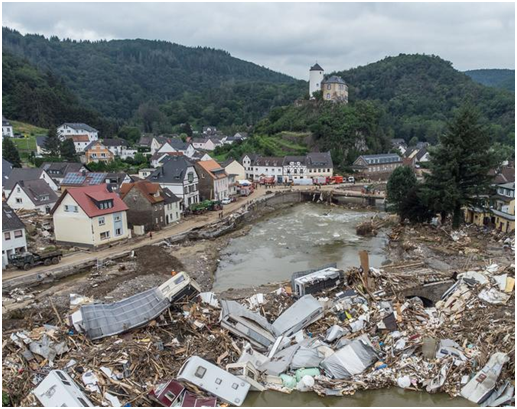This study is an attempt to determine potential tsunamigenic morphostructural nodes in mainland Greece using pattern recognition algorithms. The earthquakes that have produced local tsunamis in the region were confined to morphostructural nodes whose locations were found by morphostructural zoning.
More“Local tsunamigenic sources in Greece, identified by pattern recognition”BORIS GRIGORYEVICH BUKCHIN PASSED AWAY
 We are deeply saddened to announce that on April 15, 2022, Boris Grigoryevich Bukchin passed away.
We are deeply saddened to announce that on April 15, 2022, Boris Grigoryevich Bukchin passed away.
He was a famous seismologist, a wonderful, kind, intimate person.
>>>The Variability of Earthquake Parameters with the Depth: Evidences of Difference of Mechanisms of Generation of the Shallow, Intermediate-Depth, and the Deep Earthquakes
At the high pressures and temperatures typical of the Earth’s interior, the brittle failure in accordance with the generally accepted Reid elastic rebound model cannot occur at depths greater than a few dozen kilometers. Nevertheless, earthquakes do occur at depths to about 700 km depth and some more.
Identifying Potential Earthquake Sources in Continental Environments
In this paper, we outline the overview of the problem of intraplate seismicity and summarize our studies aimed at identifying potential earthquake sources in three regions located in the continental environments. We study the French Massif Central located within the West-European platform, the Gujarat area situated at the northwestern edge of the Indian shield, and northeast Egypt located in the northeastern corner of the African continent.
More“Identifying Potential Earthquake Sources in Continental Environments”Late Glacial and postglacial seismicity in the Northeastern Fennoscandian Shield: tectonic position and age of paleo-earthquakes near Murmansk
The results of paleoseismological studies in the area south of the city of Murmansk are discussed. As the main seismogenic zone, a system of strike-slip and reversefaults of the NNW strike along the Kola rivervalley is identified here. Radiocarbon dating identified three episodes of high seismic activity: from 9500 to 10500 years ago, from 892 to 1182 and about 300 years ago.
More“Late Glacial and postglacial seismicity in the Northeastern Fennoscandian Shield: tectonic position and age of paleo-earthquakes near Murmansk”Science diplomacy for disaster risk reduction
This paper analyses science diplomacy efforts to reduce disaster risks and proposes establishing national knowledge exchange centers (KECs) to help individual states adhere to their Sendai Framework goals.
More“Science diplomacy for disaster risk reduction”Natural hazards and climate change are not drivers of disasters
Many countries face challenges in assessing, understanding, and responding to time-dependent disaster risks. The increasing intensity of extreme events, combined with the increasing vulnerability of people and infrastructure to natural hazards such as earthquakes and tsunamis, volcanic eruptions and lava flows, floods and hurricanes, are changing the impact of natural hazards on society in a largely negative way. A.Ismail-Zadeh’s article “Natural hazards and climate change are not drivers of disasters” published in Natural Hazards examines the relationship between natural hazard events, climate change, social and physical vulnerabilities, and decision-making. While natural hazards provoke disasters and climate change increases the frequency and magnitude of events, vulnerability and exposure to natural hazards are major drivers of disasters. Informed decision-making to reduce disaster risk must be based on scientific evidence about natural hazards and climate change, knowledge about vulnerabilities, and various scenarios for disaster prevention in disaster preparedness. Doug Bostrom and Mark Kodack (Bostrom and Kodack, 2021) wrote about this paper: “One of the more thought-provoking articles in this week’s collection … A provocative title, but it’s hard to argue with the article’s premise … Dr. Ismail-Zadeh points out that when we’re fully informed of risks and hazards, disasters mostly happen only when we ignore that information and fail to take it into account in our systems of communicating and living … The author examines some case histories of hazards and risks inadequately folded into plans and actions, and points out specific means to redress the situation.”
A. Ismail-Zadeh mentions in a note “Poor planning compounded European flooding catastrophes” published in Nature that the catastrophic consequences of the 2021 floods in Germany (Figure 1) and neighboring countries were exacerbated by a lack of preparation and public awareness. Climate change, referred to by many in connection with disasters, can cause an increase in the number and power of extreme hydro-meteorological events, so, for example, frequent heavy rains can lead to floods. But to say that climate change is responsible for disasters caused by flooding is akin to saying that the SARS-CoV-2 virus is fueling the COVID-19 pandemic and its socio-economic consequences. The virus triggered the pandemic, but its spread was facilitated by many countries’ lack of preparedness and delayed control measures. “Countries must urgently take steps to mitigate the risks associated with extreme flooding and other natural and human-induced hazard events, if future damage is to be averted,” writes A. Ismail-Zadeh.

The study was supported by a grant from the Russian Science Foundation (19-17-00027).
Ismail-Zadeh, A. (2021) Natural hazards and climate change are not drivers of disasters. Natural Hazards. DOI: 10.1007/s11069-021-05100-1
Ismail-Zadeh, A. (2021) Poor planning compounded European flooding catastrophes. Nature, 598(7879), 32. DOI: d41586-021-02712-2
Bostrom, D., and Kodack, M. (2021) Skeptical science new research for week #45. Available at: link.

